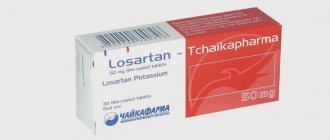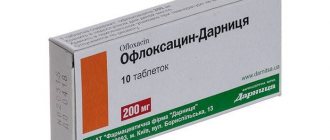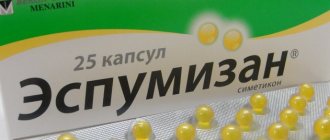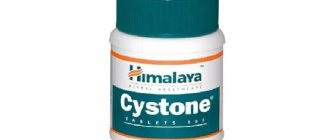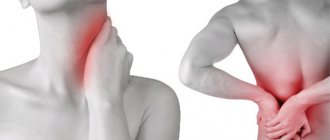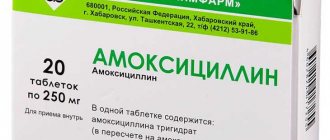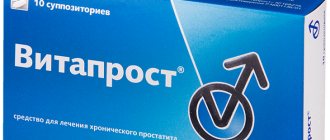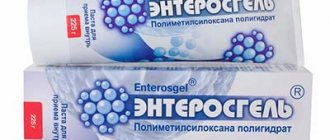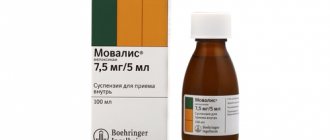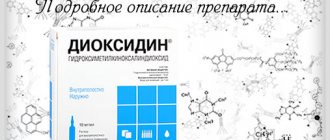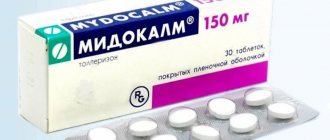Analogs
The most popular generic Nurofen is Ibuprofen, since the basis of this medicine is the same active compound.
Ibuprofen is also available in suppositories, suspensions and solid forms; it is prescribed for the same problems (fever, pain) and is not used for the same diseases that are a contraindication to the use of Nurofen. Nurofen in suppositories can be replaced not only with paracetamol-based suppositories - (prescribed from 6 months), (allowed from 1 month), (used from 3 months). In rare cases, they resort to the use of suppositories or other means.
Liquid Nurofen is usually replaced with other syrups and suspensions with similar effects. These can be ibuprofen preparations (for children, Ibuprofen-Akrikhin, Ibufen), and products that contain paracetamol (Calpol, Efferalgan, Children's Panadol, Paracetamol).
Instead of Nurofen in tablets, you can use Faspik, Mig 200, Deblok, Ibuprofen-Hemofarm, Perfalgan, Paracetamol, Panadol, Analgin and other drugs that have the same therapeutic effect. But before using any of these products in children, it is advisable to consult a doctor, because many of them have other active substances and various contraindications.
For more information about antipyretics, see Dr. Komarovsky’s program.
Is it allowed to give Nurofen to children?
Nurofen syrup is an excellent antipyretic for children from 3 months. It is easy to use, has a pleasant taste, and is also inexpensive. If the fever does not go away after using Nurofen, you need to try another drug.
It is impossible to reduce fever instantly with syrup. If a child's temperature rises rapidly, you need to call an ambulance. Nurofen syrup only reduces fever, but does not affect the treatment of the disease. If a child becomes ill with a bacterial disease, then antibiotics should be used. Nurofen works effectively in combination with various medications. As the fever decreases, the little patient’s well-being improves.
It is important to know! Nurofen is allowed to be used by parents without a doctor's prescription in case of severe fever.
If after some time the temperature begins to rise again, then it is necessary to repeat the use of the syrup. Depending on the age of the baby, the interval between repeated use of the drug is from 6 to 8 hours. You can read the instructions in more detail.
It is important to know! The effect of antipyretic drugs in the form of syrup occurs much faster than when using the release form in the form of rectal suppositories.
To summarize, it is important to note that the time it takes for Nurofen syrup for children to act at fever is influenced by factors such as the causes of high fever, the age of the patient, as well as the correct dosage.
Contraindications, side effects and overdose
You should especially carefully study the information about diseases and conditions for which Nurofen should not be taken.
Contraindications to taking the suspension for children are:
- previously identified intolerance to a group of non-steroidal anti-inflammatory drugs;
- hypersensitivity to the components of the drug (ibuprofen and excipients, such as fructose);
- peptic ulcers of the stomach or duodenum;
- bronchial asthma;
- previously identified bleeding after the use of NSAIDs;
- kidney or liver pathologies;
- increased potassium levels in the blood;
- high degree of dehydration (due to diarrhea, vomiting);
- blood diseases (hemophilia, leukopenia); internal bleeding;
- pregnancy in the 3rd trimester;
- severe heart failure;
- children up to 3 months (body weight up to 5 kg).
In addition, if you choose the wrong dosage for a child or continue treatment with Nurofen for a long period, unwanted side effects are possible.
Among them:
- manifestations of allergies (itching, rash, bronchospasm, swelling);
- nausea, vomiting;
- abdominal pain;
- lesions of the mucous membrane (ulcers, bleeding);
- stomach upsets;
- headache, dizziness;
- disruptions in hematopoiesis (anemia, leukopenia);
- kidney pathologies, cystitis;
- increased excitability, insomnia.
Poisoning by the drug is possible if the child drinks too large a dose of the suspension. Signs of this condition appear 4 hours after taking the medicine.
Overdose symptoms:
- vomit;
- pain in the epigastric region;
- lethargy, drowsiness;
- noise in ears;
- decreased blood pressure;
- headache;
- heart rhythm disturbance;
- gastrointestinal bleeding;
- acute renal failure;
- convulsions;
- coma (in rare cases with severe poisoning).
In case of overdose, you need to rinse the stomach, give the child activated charcoal, and alkaline drinking will help. If necessary, the doctor will prescribe symptomatic therapy.
Overdose
Paracetamol
Symptoms: Symptoms of paracetamol overdose during the first 24 hours: pale skin, nausea, vomiting, anorexia and abdominal pain. Liver damage may occur 12 to 48 hours after ingestion, so you should consult a doctor even if you have no symptoms. Impaired glucose metabolism and metabolic acidosis are possible. In severe poisoning, liver failure can progress with complications such as encephalopathy, hemorrhage, hypoglycemia, cerebral edema and death. Acute renal failure with acute tubular necrosis (defined by low back pain, hematuria, and proteinuria) can develop even in the absence of severe liver damage. There have been reports of cardiac arrhythmias and pancreatitis.
Treatment: Immediate treatment is necessary for paracetamol overdose. Despite the lack of significant early symptoms, patients should be rushed to hospital for immediate medical examination. Symptoms may be limited to nausea or vomiting and may not be consistent with
severity of overdose or risk of organ damage. Liver damage can occur 12-48 hours after ingesting paracetamol, so you should consult a doctor even if you have no symptoms.
Treatment with activated charcoal should be considered if the excessive dose was taken less than 1 hour ago. Plasma concentrations of paracetamol should be measured 4 hours or more after dosing (earlier concentrations are unreliable). Treatment with N-acetylcysteine can be carried out up to 24 hours after taking paracetamol, but the maximum protective effect is achieved about 8 hours after taking the drug. The effectiveness of the antidote gradually decreases after this time. If necessary, N-acetylcysteine is administered intravenously in accordance with the established dosage regimen. Outside the hospital, if there is no vomiting, methionine can be used orally. Patients presenting with severe hepatic dysfunction within 24 hours of taking the drug should be referred to a poisoning specialist.
Additional information on special patient populations
An increased risk of liver damage from paracetamol overdose is most likely in:
- patients receiving long-term treatment with enzyme-inducing drugs (such as carbamazepine, phenobarbitone, phenytoin, primidone, rifampicin and St. John's wort);
- patients who drink alcohol in quantities higher than recommended;
- patients with glutathione depletion (eg, patients with eating disorders, cystic fibrosis, HIV infection, cachexia, fasting).
Ibuprofen
In children, overdose symptoms may occur after taking a dose exceeding 400 mg/kg body weight. In adults, the dose-dependent effect of overdose is less pronounced. The half-life of the drug in case of overdose is 1.5-3 hours.
Treatment: symptomatic, with mandatory maintenance of airway patency, monitoring of ECG and vital signs until the patient’s condition is normalized. Oral use of activated charcoal or gastric lavage is recommended within 1 hour after taking a potentially toxic dose of ibuprofen. If ibuprofen has already been absorbed, an alkaline drink may be prescribed in order to eliminate the acidic derivative of ibuprofen by the kidneys, forced diuresis. Frequent or prolonged seizures should be treated with intravenous diazepam or lorazepam. If bronchial asthma worsens, the use of bronchodilators is recommended.
Contraindications for use
Before starting treatment with Nurofen, parents should carefully read the contraindications for the use of the medicine. If you give it to your baby without taking them into account, it can cause negative consequences for the baby’s health:
- You should avoid prescribing the drug to children who have individual intolerance to the main active component or additional substances. In such cases, it is better to play it safe and choose another remedy that has a gentle effect. It is necessary to inform your doctor about this so that he can choose a safer substitute that does not contain ibuprofen.
- Nurofen should not be prescribed to children with hearing loss.
- Blood diseases are an absolute contraindication to the use of Nurofen. This primarily concerns disorders such as low white blood cell counts, hemophilia and decreased coagulation.
During the first visit, you must inform the doctor if at this moment the child is being treated with certain medications.
Giving children who are already taking blood thinning medications or diuretics should only be given with the permission of the attending physician. In addition to this, Nurofen should not be prescribed to children who are taking antihypertensive drugs, as well as medications containing lithium. In some children, Nurofen can cause unpleasant side effects, which the pediatrician should inform parents about before prescribing this drug.
Interaction
It is not recommended to use Nurofen baby suppositories simultaneously with acetylsalicylic acid, as well as thrombolytic drugs, diuretics, Nimesulide, antiplatelet agents, Paracetamol, as well as cardiac glycosides and other medications according to the instructions.
Many of them, when combined with ibuprofen, increase the risk of side effects, for example, have a nephrotoxic effect.
Contraindications to the use of the medicine
The use of children's fever syrup "Nurofen" is contraindicated in a number of certain physiological and pathological conditions, the list of which includes:
- Individual cases of the development of intolerance and hypersensitivity of the child’s body to the active substance or additional components of this pharmacological drug.
- Cases of hypersensitivity to other anti-inflammatory non-steroidal drugs, such as acetylsalicylic acid, paracetamol, etc.
- The presence of certain signs of the occurrence of the “aspirin triad” syndrome, which is characterized by allergic rhinitis, bronchial asthma, nasal polyposis, which is provoked by the use of acetylsalicylic acid and other anti-inflammatory non-steroidal medications.
- Various pathologies of the gastrointestinal tract, which are characterized by the formation of disorders of the mucous membrane (erosive gastritis, peptic ulcer in the stomach or duodenum), especially at the stages of clinical and laboratory exacerbation.
- Gastrointestinal bleeding of any location in the active period.
- Inflammatory bowel pathologies.
- Pathologies of the circulatory system in the form of hemophilia or hypocoagulation (blood clotting disorder), leukopenia (decreased number of leukocytes in the blood).
- Marked decrease in liver or kidney functionality.
- Decreased hearing acuity.
With some caution, Nurofen syrup should be used for pathologies of the liver and kidneys, as well as in the presence of a bacterium such as Helicobacter pylori in the stomach. In addition, you should be extremely careful about the use of this medication when the child is concomitantly taking indirect anticoagulants - drugs that change blood clotting, as well as other anti-inflammatory non-steroidal drugs
If children have bronchial asthma or allergic reactions (for example, urticaria), the drug "Nurofen" in the form of syrup is also used with caution and only after the recommendation of a pediatrician. Before starting to use this medication, you should make sure that there are no contraindications to this medication. What is the dosage of Nurofen syrup?
Contraindications
The drug should not be taken orally in the third trimester of pregnancy, during lactation, in children under 6 years of age, as well as in all patients with:
- Leukopenia;
- Diseases of the optic nerve;
- Scotoma;
- Color vision impairment;
- Amblyopia;
- Hemorrhagic diathesis;
- Hemophilia and hypocoagulation states;
- Aspirin-induced bronchial asthma;
- Pathologies of the vestibular apparatus and hearing loss;
- Severe liver/kidney dysfunction;
- Severe heart failure;
- Severe arterial hypertension;
- Glucose-6-phosphate dehydrogenase deficiency;
- A history of urticaria or rhinitis caused by taking acetylsalicylic acid or other NSAIDs;
- Hypersensitivity to ibuprofen or any other component of the drug;
- Erosive and ulcerative lesions of the gastrointestinal tract during their exacerbation, including gastric and duodenal ulcers, Crohn's disease, peptic ulcers and ulcerative colitis.
With caution, Nurofen in tablet form is prescribed:
- For bronchial asthma;
- For blood diseases of unknown etiology;
- For autoimmune diseases, incl. with systemic lupus erythematosus;
- For arterial hypertension;
- When indicating a history of gastric or duodenal ulcer;
- For chronic heart failure;
- In the first and second trimesters of pregnancy;
- Children from 6 to 12 years old;
- For gastritis, colitis, enteritis and bleeding from the gastrointestinal tract;
- With hyperbilirubinemia;
- In the presence of concomitant liver/kidney diseases, including nephrotic syndrome, liver cirrhosis with portal hypertension.
Indications for use
The use of Nurofen syrup is indicated for a number of pathological processes that may be accompanied by the development of pain, as well as an increase in temperature in the child, and against the background of acute inflammatory reactions. The list of indications for the use of this medication includes:
- Acute viral respiratory infections, which are characterized by damage to the upper respiratory tract with the development of severe intoxication.
- All types of influenza, which are specific respiratory viral infections that are provoked by influenza viruses and are caused by a severe and moderate course of the disease with the development of severe intoxication.
- A variety of childhood bacterial infections, which are accompanied by an increase in temperature to critical levels.
- Post-vaccination reactions of the body, which are usually characterized by an increase in temperature in a child after routine vaccination.
- Migraine-like headaches, as well as other types of pain in the head of moderate intensity.
- Symptomatic cephalalgia in children.
- Toothache of mild to moderate intensity, including during teething.
- Various forms of neuralgia, accompanied by pain that develops as a result of a non-infectious (aseptic) inflammatory process affecting peripheral nerves.
- Pain in the throat, middle ear, and also in the bony sinuses of the skull.
- Postoperative and post-traumatic pain of any localization.
Nurofen syrup is prescribed very often for fever. It is a medication for the symptomatic treatment of the above-described pathological conditions. It helps lower body temperature, eliminate inflammatory processes and pain of varying severity, however, this medication is not an independent treatment, since it does not affect the course of pathological processes and their progression.
Indications
As an antipyretic for diseases and conditions accompanied by an increase in body temperature, incl. at:
- acute respiratory diseases;
- flu;
- childhood infections;
- post-vaccination reactions.
As an analgesic for pain of mild or moderate intensity, incl. at:
- headache;
- toothache;
- migraine;
- neuralgia;
- pain in the ears and throat;
- pain due to injuries of the musculoskeletal system (incl.
- sprains).
Release form
Nurofen, which is prescribed to children, is distinguished by an orange-yellow box and is presented in the following three forms:
- Rectal suppositories. They are sold in aluminum blisters of 5 pieces (a total of 10 candles per pack). Candles removed from the packaging are characterized by a smooth surface, oblong shape and white color.
- Suspension. This Nurofen is sold in plastic bottles containing 100, 200 or 150 ml of white thick syrupy liquid. It tastes sweet and smells like either strawberry or orange. Along with the bottle in the box there is a plastic dispenser syringe with milliliters marked on it.
- Pills. They are sold in packs of 8 pieces and are characterized by their round shape and small size. These tablets have a sweet white coating, and on one side you can read the word Nurofen written in black ink.
In addition to these forms, the Nurofen line includes several more types of tablets, gel and capsules, but these drugs are prescribed to children very rarely, since they are contraindicated until 12-14 years of age due to the high dosage of ibuprofen and the increased risk of side effects.
Release form and composition of Children's Nurofen
The analgesic and anti-inflammatory drug Nurofen has many varieties, which can be produced in various forms: from tablets and gels to suspensions and drops. All of them are types of the same medicine and have the same properties, effects and rules of use.
The syrup (suspension) is intended exclusively for children under 12 years of age. Has strawberry or orange flavor. Vials of the suspension are packaged in cardboard boxes and sold in 100, 150 and 200 ml.
Among other forms of release:
- Sugar-coated tablets. Available in blisters of 10 or 20 pieces. Available in 0.2, 0.4 and 0.6 grams.
- Chewable tablets. Often used for children. Produced in 0.05, 0.1 and 0.2 grams.
- Capsules 0.3 grams. They have a longitudinal shape.
- Drops. They are a 4% solution. Available in 15 ml.
- Cream 5% and gel 10%. For external use. The cream is sold in tubes of 20, 50 and 100 grams, and the gel – 30 ml.
- Suppositories 60 mg. Sold in blisters of 5 pieces.
In all variations of the drug, the main active ingredient is ibuprofen. Depending on the form of release and type of drug, the dosage of the active component also varies.
Nurofen for children contains 100 mg of ibuprofen per 5 ml of syrup. Excipients are:
- water;
- glycerol;
- domiphene bromide;
- lemon acid;
- maltitol syrup;
- gum;
- saccharinate, sodium chloride and citrate;
- strawberry or orange flavoring.
Regimen and dosage of Nurofen
Nurofen in suspension
When determining the dosage of the medicine and to answer the question of how much Nurofen to give, you need to know the child’s weight. Based on this, the syrup intake is calculated - per kg of baby’s body weight, you need from 5 to 10 mg of antipyretic. For ease of use of the medicine, a branded orange 5 ml syringe is included in each suspension package.
Based on the instructions, children aged 3 months to 12 years are prescribed the following dosage:
| Age | Child's weight | Amount of drug per dose | Interval between doses | Maximum daily dosage |
| 3-6 months | 5-6 kg | 2.5 ml/3 times a day | 6-8 hours | 7.5 ml |
| 6-12 months | 6-10 kg | 2.5 ml/3-4 times a day | 6-8 hours | 10 ml |
| 1-3 years | 10-15 kg | 5 ml/3 times a day | 6-8 hours | 15 ml |
| 4-6 years | 15-20 kg | 7.5ml/3 times a day | 6-8 hours | 22 ml |
| 7-9 years | 21-29 kg | 10 ml/3 times a day | 6-8 hours | 30 ml |
| 10-12 years | 30-40 kg | 15 ml/3 times a day | 6-8 hours | 45 ml |
The antipyretic should not be taken for more than 5 days and should not exceed the dose recommended in the instructions for use.
Nurofen in suppositories
Another form of release of the drug Nurofen is rectal suppositories. Their dosage is also calculated based on the child’s weight, as in the case of the suspension. One suppository 60 mg of ibuprofen. For those who do not know how often to give Nurofen in suppositories, the scheme is the same as with syrup - a dosage interval of at least six hours.
- Infants aged 3-9 months are prescribed 1 suppository up to 3 times a day. The body weight of infants when using suppositories at this age should be within 6-8 kg. The maximum daily dosage is 180 mg/day.
- If a child is aged from 9 months to 2 years and his body weight is 8-12 kg, then 1 suppository is prescribed up to 4 times a day. The maximum daily dose is 240 mg/day.
pharmachologic effect
The drug has the following therapeutic properties:
- Analgesic.
- Antipyretic.
- Anti-inflammatory.
It should be noted that in case of pain, the effect of Nurofen suppositories for children is more pronounced if the cause is an inflammatory process.
According to the instructions, the suppositories contain ibuprofen, which penetrates into the blood where it forms compounds with blood proteins. Next, the active substance distributes evenly throughout all tissues, where it exerts its therapeutic effect for eight hours.
According to the instructions for use for Nurofen suppositories for children, it is known that the medicine begins to act twenty to thirty minutes after administration, since the absorption time of the drug is approximately fifteen minutes.
Features of application
When taking Nurofen syrup, as when taking many medications, there is a risk of side effects. Risks can be minimized by consuming the syrup in as small doses as possible for as few days as possible.
Side effects
Unfortunately, the side effects that were recorded with short-term use of no more than 120 mg of ibuprofen per day can occur in all body systems.
In the circulatory system, the functions of blood formation are disrupted: various anemias, agranulocytosis and pancytopenia may occur. Their primary symptoms are unidentified bruises, hemorrhages, a flu-like condition, sore throat, and mouth ulcers.
The immune system reacts poorly to the drug through allergic and anaphylactic reactions. Rarely, allergic rhinitis and breathing disorders may occur, such as exacerbation of asthma with bronchospasm, shortness of breath.
Swelling, dermatoses, urticaria, which is accompanied by itching, skin diseases, such as Lyell and Stevens-Johnson syndromes, erythema of various forms are possible on the skin.
The liver and kidneys generally tolerate and eliminate the drug well. Their functions are violated extremely rarely; in particular, renal failure occurs.
The digestive system may react to the medicine with symptoms of gagging and nausea. There may be abdominal pain, rarely diarrhea or constipation. Such serious disorders as exacerbation of ulcers, bleeding, gastritis were observed once in ten thousand cases of side effects.
Heart failure is also possible, the risks of heart attack and stroke increase, and there may be a headache. It is extremely rare for autoimmune patients to experience aseptic meningitis. It should be borne in mind that the use of Nurofen may affect test results.
Thus, the hemoglobin level, plasma glucose concentration and creatinine clearance decrease, the activity of liver transmyases, plasma creatinine, and bleeding time increase.
Did you know? In ancient Egypt, mice were used to treat childhood illnesses. This is written about in the Smith papyrus. The mouse had to be swallowed.
Contraindications
Nurofen syrup should not be taken by children with stomach ulcers, internal bleeding, bronchial asthma, liver disease, kidney and heart failure, hemophilia and various bleeding disorders.
It can be used with caution in mild forms of the above diseases, paying attention to interactions with other drugs. The syrup should not be drunk if the body is intolerant to the main substance and components of the drug, for example fructose.
The syrup should not be drunk if the body is intolerant to the main substance and components of the drug, for example fructose.
Overdose
An overdose of Nurofen syrup can occur when taking 20 ml of syrup per kilogram of the patient’s weight. The symptoms that arise in this case are characterized by headache, abdominal pain, nausea, vomiting, possible bleeding, exacerbation of bronchial asthma in the form of bronchospasms, heart failure, low blood pressure, renal and liver failure, cyanosis.
If a large dose of medication has been taken recently, you need to rinse your stomach and take sorbents. If a large amount of ibuprofen gets into the blood, it is necessary to remove the symptoms of excessive use using medication (depending on the damage to a specific body system) until the condition stabilizes. The airways must be clear, a cardiogram is needed.
Nurofen suppositories for children: instructions, price
Suppositories are used only rectally, and the dosage of the drug is determined taking into account certain factors, among which the most significant are the age and weight of the child.
The medicine is carefully inserted into the anus and pushed through with the index finger.
According to the instructions for the Nurofen 60 mg suppositories, one suppository is prescribed for children aged three months to two years. For small patients from three to nine months with a body weight of 6 to 8 kilograms, the drug can be administered three times a day, and the maximum concentration of the active substance for this age is 180 milligrams.
For children over 9 months to two years old, whose weight varies from 8 to 12 kilograms, suppositories can be administered four times a day (maximum dosage 240 mg). The intervals between procedures should be six to eight hours. It is advisable to insert suppositories after emptying.
If the small patient went to the toilet after using the drug, and the suppository has not yet had time to dissolve (less than fifteen minutes have passed), the medication can be reused.
The duration of treatment for fever during ARVI, as well as influenza and other infections should not exceed three days, and for pain syndrome the duration of treatment is up to five days. If babies from three to five months do not experience any improvement during the first 24 hours after the administration of the Nurofen baby suppository, you should immediately notify a medical specialist.
For young patients from six months of age, observation is carried out for three days. If during this time the patient’s condition has not improved, the symptoms do not go away or intensify, immediate consultation with a doctor is necessary.
If Nurofen is recommended for a child with a fever reaction to vaccination, then only one suppository is administered to the baby. For a patient older than one year, if necessary, six to eight hours later, it is permissible to insert another suppository.
The maximum concentration of the drug for post-immunization fever in children over one year of age is two Nurofen suppositories.
According to the instructions, there is no syrup for older children. The medicine for this category of patients is available in the form of a suspension for oral administration.
Of course, children over 2 years old can use suppositories to relieve fever and pain. But in this case, the dosage of Nurofen suppositories for children will be slightly different.
As a rule, it is recommended to administer Nurofen to children over 3 years of age with two suppositories at once. But in rare situations when it is not possible to use the drug in another dosage form, you will have to use this option.
Nurofen suppositories for children over 3 years of age can be used to reduce fever and relieve mild or moderate pain.
Nurofen rectal suppositories are sold freely in pharmacies, without a prescription from a medical specialist. The cost of the drug varies from 100 to 120 rubles.
The medicine must be kept in a dry place, away from children. Storage temperature is plus twenty-five degrees. Shelf life - twenty-four months.
Side effect
The risk of side effects can be minimized if the drug is taken in a short course, at the minimum effective dose required to eliminate symptoms.
Elderly people experience an increased incidence of adverse reactions with NSAID use, especially gastrointestinal bleeding and perforation, in some cases fatal.
Side effects are predominantly dose-dependent.
The following adverse reactions were observed with short-term use of ibuprofen in doses not exceeding 1200 mg/day (6 tablets).
When treating chronic conditions and with long-term use, other adverse reactions may occur.
The incidence of adverse reactions was assessed based on the following criteria: very frequent (≥ 1/10), frequent (from ≥ 1/100 to
Blood and lymphatic system disorders
Very rare: hematopoietic disorders (anemia, leukopenia, aplastic anemia, hemolytic anemia, thrombocytopenia, pancytopenia, agranulocytosis). The first symptoms of such disorders are fever, sore throat, superficial oral ulcers, flu-like symptoms, severe weakness, nosebleeds and subcutaneous hemorrhages, bleeding and bruising of unknown etiology.
Immune system disorders
- Uncommon: hypersensitivity reactions - nonspecific allergic reactions and anaphylactic reactions, reactions from the respiratory tract (bronchial asthma, including its exacerbation, bronchospasm, shortness of breath, dyspnea), skin reactions (itching, urticaria, purpura, Quincke's edema, exfoliative and bullous dermatoses , including toxic epidermal necrolysis (Lyell's syndrome), Stevens-Johnson syndrome, erythema multiforme), allergic rhinitis, eosinophilia.
- Very rare: severe hypersensitivity reactions, including swelling of the face, tongue and larynx, shortness of breath, tachycardia, hypotension (anaphylaxis, angioedema or severe anaphylactic shock).
Gastrointestinal disorders
- Uncommon: abdominal pain, nausea, dyspepsia (including heartburn, bloating).
- Rare: diarrhea, flatulence, constipation, vomiting.
- Very rare: peptic ulcer, perforation or gastrointestinal bleeding, melena, hematemesis, in some cases fatal, especially in elderly patients, ulcerative stomatitis, gastritis.
- Frequency unknown: exacerbation of colitis and Crohn's disease.
Disorders of the liver and biliary tract
Very rare: liver dysfunction, increased activity of liver transaminases, hepatitis and jaundice.
Renal and urinary tract disorders
Very rare: acute renal failure (compensated and decompensated), especially with long-term use, in combination with an increase in the concentration of urea in the blood plasma and the appearance of edema, hematuria and proteinuria, nephritic syndrome, nephrotic syndrome, papillary necrosis, interstitial nephritis, cystitis.
Nervous system disorders
- Uncommon: headache.
- Very rare: aseptic meningitis.
Cardiovascular disorders
Frequency unknown: heart failure, peripheral edema, with long-term use there is an increased risk of thrombotic complications (for example, myocardial infarction), increased blood pressure.
Disorders of the respiratory system and mediastinal organs
Frequency unknown: bronchial asthma, bronchospasm, shortness of breath.
Laboratory indicators
- hematocrit or hemoglobin (may decrease)
- bleeding time (may increase)
- plasma glucose concentration (may decrease)
- creatinine clearance (may decrease)
- plasma creatinine concentration (may increase)
- activity of “liver” transaminases (may increase)
If side effects occur, you should stop taking the drug and consult a doctor.
special instructions
The drug should be used with caution if the child has a history of peptic ulcers, gastritis, ulcerative colitis, bleeding from the gastrointestinal tract, liver or kidney diseases, bronchial asthma, urticaria, while taking other analgesics, indirect anticoagulants, antihypertensive drugs, diuretics, lithium drugs , methotrexate.
Nurofen® for children can be used in children with diabetes mellitus, because... the drug does not contain sugar. Does not contain dyes.
The child's parents should be informed that if side effects occur, they should stop taking the drug and consult a doctor.
Analogs in syrup form
- Ibuprofen-FT
Unlike Nurofen, it can be prescribed from 6 months of age for diseases of the joints and ENT organs. As an analgesic, Ibuprofen-FT is suitable for relieving intense pain during inflammatory processes occurring in ligaments, soft and muscle tissues.
- Bofen
Can be given to children from 3 months of age. Bofen effectively eliminates heat and pain during teething, sinusitis, otitis, acute respiratory infections, acute respiratory viral infections.
- Advil
The suspension easily relieves fever and pain in children suffering from pathologies of the ENT organs and infections of the respiratory system. It also helps relieve swelling and hyperemia in injuries of varying severity.
- Ibufen
Prescribed to babies who have reached 3 months of age. The main indications for the use of Ibufen are viral and bacterial infections, influenza, inflammatory diseases of the ENT organs, damage to bone and soft tissues, ligaments, and joints. To relieve pain during teething and after their treatment, this medicine is prescribed by pediatric dentists.
- Ibunorm Baby
Teething, flu, ARVI, frontal sinusitis, tonsillitis, sinusitis, otitis, acute respiratory infections - all these diseases are effectively eliminated by taking Ibunorm Baby. Any focus of inflammation will be suppressed in a short time. Like Nurofen, it has contraindications:
- diseases of the digestive system;
- hypersensitivity to ibuprofen and other ingredients;
- pathologies of the kidneys and liver.
When to use suppositories for fever
Since the most common reason for using Nurofen in children is fever, parents should know in which cases treatment with suppositories is justified. If we talk about numbers, then for a child 2-24 months old, the indicator on the thermometer that requires the use of an antipyretic is called +39C. However, there are situations when the temperature should be “lowered” even at a lower figure:
- If there is a high risk of seizures (febrile). It is indicated by attacks of such convulsions in the past or some neurological pathologies in the baby.
- If the child has serious diseases of the cardiovascular system.
- If the baby tolerates elevated temperatures, it is very difficult.
- If the fever is caused by overheating.
- If the cause of the high temperature is a vaccination.
Interaction with other drugs
The simultaneous use of ibuprofen with the following drugs should be avoided:
- Acetylsalicylic acid: with the exception of low doses of acetylsalicylic acid (no more than 75 mg per day) prescribed by a doctor, since combined use may increase the risk of side effects. With simultaneous use, ibuprofen reduces the anti-inflammatory and antiplatelet effect of acetylsalicylic acid (an increase in the incidence of acute coronary insufficiency in patients receiving small doses of acetylsalicylic acid as an antiplatelet agent is possible after starting ibuprofen).
- Other NSAIDs, in particular selective COX-2 inhibitors: the simultaneous use of two or more drugs from the NSAID group should be avoided due to a possible increased risk of side effects.
Use with caution simultaneously with the following medications:
Anticoagulants and thrombolytic drugs: NSAIDs may enhance the effect of anticoagulants, in particular warfarin and thrombolytic drugs.
Antihypertensives (ACE inhibitors and angiotensin II antagonists) and diuretics: NSAIDs may reduce the effectiveness of drugs in these groups. In some patients with impaired renal function (eg, dehydrated patients or elderly patients with impaired renal function), coadministration of ACE inhibitors or angiotensin II antagonists and cyclooxygenase inhibitors may lead to a deterioration of renal function, including the development of acute renal failure. (usually reversible). These interactions should be considered in patients taking coxibs concomitantly with ACE inhibitors or angiotensin II antagonists.
In this regard, the combined use of the above drugs should be prescribed with caution, especially in the elderly. Patients should be prevented from becoming dehydrated and renal function monitoring should be considered upon initiation of this combination treatment and periodically thereafter.
Diuretics and ACE inhibitors may increase the nephrotoxicity of NSAIDs.
Glucocorticosteroids: increased risk of gastrointestinal ulceration and gastrointestinal bleeding.
Antiplatelet agents and selective serotonin reuptake inhibitors: increased risk of gastrointestinal bleeding.
Cardiac glycosides: simultaneous administration of NSAIDs and cardiac glycosides can lead to worsening heart failure, a decrease in glomerular filtration rate and an increase in the concentration of cardiac glycosides in the blood plasma.
Lithium preparations: there is evidence of the likelihood of an increase in the concentration of lithium in the blood plasma during the use of NSAIDs.
Methotrexate: there is evidence of the likelihood of an increase in the concentration of methotrexate in the blood plasma during the use of NSAIDs.
Cyclosporine: increased risk of nephrotoxicity when NSAIDs are administered concomitantly with cyclosporine.
Mifepristone: NSAIDs should be started no earlier than 8 to 12 days after taking mifepristone, as NSAIDs may reduce the effectiveness of mifepristone.
Tacrolimus: When NSAIDs and tacrolimus are coadministered, the risk of nephrotoxicity may increase.
Zidovudine: Concomitant use of NSAIDs and zidovudine may result in increased hematotoxicity. There is evidence of an increased risk of hemarthrosis and hematomas in HIV-positive patients with hemophilia who received concomitant treatment with zidovudine and ibuprofen.
Quinolone antibiotics: In patients receiving concomitant treatment with NSAIDs and quinolone antibiotics, the risk of seizures may be increased.
Myelotoxic drugs: increased hematotoxicity.
Cefamandole, cefoperazone, cefotetan, valproic acid, plicamycin: increased incidence of hypoprothrombinemia.
Drugs that block tubular secretion: decreased excretion and increased plasma concentrations of ibuprofen.
Inducers of microsomal oxidation (phenytoin, ethanol, barbiturates, rifampicin, phenylbutazone, tricyclic antidepressants): increased production of hydroxylated active metabolites, increased risk of developing severe intoxications.
Microsomal oxidation inhibitors: reducing the risk of hepatotoxicity.
Oral hypoglycemic drugs and insulin, sulfonylurea derivatives: increased effect of drugs.
Antacids and cholestyramine: decreased absorption.
Uricosuric drugs: decreased effectiveness of drugs.
Caffeine: increased analgesic effect.
Pharmacological properties
Pharmacodynamics
Nurofen Plus has antipyretic, analgesic, anti-inflammatory and antitussive effects. The therapeutic effect of the drug is determined by the active substances - ibuprofen and codeine. Their difference in mechanism and site of action allows the combination to achieve a more pronounced reduction in pain sensitivity.
Ibuprofen is a propionic acid derivative from the NSAID group. The mechanism of its action is due to a slowdown in the synthesis of prostaglandins - mediators of pain, hyperthermic reaction and inflammation. Inhibition of prostaglandin synthesis occurs against the background of indiscriminate blocking of COX-1 and COX-2 (cyclooxygenase-1 and cyclooxygenase-2). This causes rapid targeted analgesic, antipyretic and anti-inflammatory effects, and reversibly inhibits platelet aggregation.
Codeine is an analgesic that acts on opioid receptors in the central nervous system (CNS) and has an antitussive effect.
Pharmacokinetics
The high absorption of ibuprofen allows it to reach its maximum concentration in the blood plasma of an adult patient 0.75 hours after taking it on an empty stomach and after 1–2 hours when taken with food.
Binding to plasma proteins is 90%. It penetrates into the joint cavity slowly, lingers in the synovial tissue and creates concentrations in it higher than in plasma.
After absorption, approximately 60% of the pharmacologically inactive R-form is slowly transformed into the active S-form. Metabolized in the liver.
The half-life (T1/2) is 2 hours. It is excreted through the kidneys (no more than 1% unchanged) and to a small extent with bile.
After oral administration, codeine is rapidly absorbed from the gastrointestinal tract (GIT). The maximum concentration in blood plasma is reached after 1 hour.
The binding of codeine to plasma proteins is 30%.
Metabolized in the liver to active metabolites.
It is excreted through the kidneys (unchanged - 5-15%, in the form of morphine and its metabolites - 10%), as well as with bile.
T1/2 codeine – 3–4 hours.
Instructions for use of syrup for children
When calculating the dosage and dosage regimen, the doctor must take into account the patient’s weight and age. In accordance with the instructions in the instructions for Nurofen syrup for children, for a single dose the drug is prescribed in an amount of 5-10 mg per 1 kg of child weight. In no case should this dosage be exceeded by more than 30 mg per kg of weight. It is also necessary to be careful when determining the optimal dosage and frequency of administration, taking into account the age of the patient. To do this you need to adhere to the following scheme:
- For children aged 3 months to six months, the drug is prescribed in an amount of 2.5 ml no more than once every 8 hours. The daily dosage should not exceed 7 ml.
- For babies from 6 months to one year, the medicine is given 2.5 ml once every 7 hours. During the day, the child should drink no more than 10 ml of medication.
- For patients aged 1 to 3 years, Nurofen is prescribed in an amount of 5 ml once every 7 hours. During treatment, the maximum daily dosage must be observed, which is 15 ml.
- Children from 4 to 6 years old should be given the medicine 7 ml three times a day. The maximum permissible daily dosage for this category of patients is 450 mg.
- For children aged 7 to 9 years, the medicine is given in a dosage of 10 ml three times a day. If necessary, the dosage can be increased, but not more than 60 mg.
- Patients aged 10 to 12 years should be given Nurofen syrup or gel in an amount of 15 ml three times a day. For this age category of patients, the maximum allowable dosage is 900 mg.
If within three days from the start of treatment with Nurofen the temperature has not been stabilized, and new symptoms of the disease have been added along with a simultaneous deterioration in well-being, you must call a doctor as soon as possible.
How long does it take for it to start working?
The instructions for children's Nurofen say that the effect of normalizing temperature or reducing pain appears within 20 minutes after taking the medicine. The effect of the drug lasts for 8 hours. Sometimes it begins to act earlier - after 30-40 minutes. This depends not only on the patient’s condition, but also on the stage of the inflammatory process.
At what temperature can the medicine be given?
According to doctors, you can take Nurofen syrup to normalize the temperature if it has exceeded 38 degrees. However, if the child’s temperature is only 37.5 degrees, but his health is causing concern, then in this case it is also allowed to give him syrup.
How to use suppositories during a feverish state?
Since the most common reason for using the drug in babies is considered to be fever, mothers need to know in what situations Nurofen suppositories are allowed to be used.
For a child from three to twenty-four months, the indicator on the thermometer that requires the use of an antipyretic drug is considered to be thirty-nine degrees. But there are cases when it is recommended to lower the temperature at lower numbers, for example, if:
- There is an increased risk of febrile seizures.
- The baby has serious heart and vascular diseases.
- The child has difficulty withstanding high fever.
- Fever is caused by overheating.
- The reason for the rise in temperature was vaccination.
What are the different forms of release of Nurofen and which is better?
Nurofen is available for sale in numerous commercial versions, which differ only in dosages and release forms.
Commercial varieties of Nurofen and their release forms
| View | Forms | At what age can children be given recommendations? |
| Just Nurofen without additional words | External gel, soluble and regular tablets. | Tablets from 6 years of age, but with a weight of more than 20 kg, up to 12 years of age with caution, in case of fever caused by a virus. Effervescent tablets and gel after 12 years. The gel was excluded from the state register. |
| Nurofen Children's | Suspension and candles | In case of fever, after vaccinations, in case of pain that does not threaten life and health. Syrup from 3 months to 12 years. Candles from 3 months to 2 years. |
| Express | Tablets, capsules and gel | From the age of 12. It is advertised as an accelerated action drug, but this effect is not confirmed by reviews. |
| Express neo | Sweet coated tablets | After 12 years. |
| Forte | Nurofen tablets with increased content of active ingredient | To get rid of severe pain due to a cause that does not threaten health and life. From 12 years to 18 with caution. |
| Ultracap, Ultracap Forte | Gelatin capsules | From 12 years old. |
| Plus, plus N | Coated tablets with the addition of another analgesic and antitussive substance - codeine | If short-term use is needed, from 12 years of age. |
| Period | Long acting tablets | After 12 years, it is indicated for diagnosed pain as prescribed by a doctor, and not as an antipyretic. |
| Assets | Dissolving mint tablets | From the age of 12. For pain, ARVI and flu. |
Most of these varieties are interchangeable, since they have identical indications, rules of administration, and therapeutic effect. The only question is about adjusting the dose when switching to another type of Nurofen and ease of use.
As for the release form, it can be important for the result, especially when it comes to children's Nurofen. Dr. Komarovsky never tires of reminding us that it is only possible to bring down a fever above 38 in a child under 12 years of age as quickly as possible only with liquid forms:
- Nurofen suspension,
- syrup.
These release forms must be taken with a sufficient amount of water. They are quickly absorbed by the walls of the stomach and intestines, enter the blood, reach the temperature regulation centers and bring it down.
Nurofen suppositories are needed when the temperature of a child under 2 years of age is not very high, below , it can not be brought down quickly, but for a long time, for example, at night. If the fever is already above 39, sometimes from 38, then a spasm of the vessels of the rectum occurs, and the antipyretic is absorbed very slowly. If you gave Nurofen, but the temperature does not go down, then this could be the reason.
From 12 years of age you can use Nurofen tablets and capsules. If you drink them with plenty of water, absorption also occurs quite quickly. Regular Nurofen tablets can be given from the age of 6, but, remembering Komarovsky’s precepts, it is better to use a suspension.
Adverse reactions
Sometimes, when using suppositories, a child may develop a negative reaction in the form of:
- Dermatosis (name of various skin diseases).
- Erythema (severe redness of the skin, which is caused by vasodilation).
- Urticaria (a polyetiological disease, the main clinical manifestation of which is transient urticarial rashes, that is, blisters and angioedema).
- Exacerbations of bronchial asthma (a chronic disease characterized by a variable clinical picture - an exacerbation of the disease is replaced by a long break without any asthmatic symptoms).
- Pain in the abdomen.
- Migraines (a neurological disease, the most common and characteristic symptom of which is episodic or regular severe and painful attacks of headache in one side of the head).
- Decrease in the number of red blood cells in the blood.
- Decrease in the number of white blood cells.
- Thrombocytopenia (a quantitative disorder of vascular-platelet hemostasis, which is characterized by a decrease in the number of platelets in the blood).
- Reducing the number of granulocytes (leukocytes, which inside contain granularity, consisting of small parts filled with active components).
- Formation of ulcers in the mouth.
- Flatulence (excessive accumulation of gases in the intestines).
- Constipation.
- Vomiting.
- Diarrhea.
- Anaphylactic reactions (the most severe form of an allergic reaction that poses a great danger to life).
- Stomach ulcers (a chronic pathological process that occurs with the formation of ulcerative plaques in the stomach, as well as a tendency to progression and complications).
- Ulcerative stomatitis (inflammatory disease of the oral cavity, accompanied by focal destruction of the mucous membrane).
- Liver disorders.
- Acute kidney disease.
- Increased blood pressure.
If, after the first use of Nurofen suppositories, a child develops at least one of the above-mentioned side symptoms, therapy should be stopped and a medical specialist should be consulted to prescribe another treatment.
At what temperature should it be given to children?
According to the recommendation of the Union of Russian Pediatricians in 2002, antipyretic medications, including Nurofen (Children), are given to children according to certain rules, which take into account the dependence on the age and health status of the child.
- In the first 3 months of life, the drug is not recommended; among antipyretics, only paracetamol can be used at temperatures above 38.
- Children over 3 months: if there were no health problems before - from 39℃, if there are muscle aches and headaches - from 38.5℃;
- when the child previously had febrile convulsions - from 38℃;
- for severe diseases of the lungs, nervous system and heart - from 38.5℃.
Composition of the medicine
The main active ingredient is a drug from the group of propionic acids - ibuprofen. It can be difficult to give medicine to sick children, especially young children and infants, so drugs are produced for them in a special children's form - in the form of syrup, such a remedy is Nurofen-syrup for children; the instructions include a description of its components contained in 5 ml of suspension:
- Ibuprofen (100 mg) is an analgesic and antipyretic, which also has an anti-inflammatory and desensitizing effect. Thanks to the last two effects of this substance on the children's body, Nurofen is effective in the treatment of false croup syndrome, which often occurs in young children against the background of a febrile state. The antipyretic effect lasts longer in a child than when using paracetamol - up to 6-8 hours (paracetamol has 2-3 times less). Prevents the formation of blood clots.
- Auxiliary components:
- The surfactant is polysorbate.
- Solvents: sodium chloride, glycerol.
- Sweeteners - maltitol syrup, sodium saccharinate.
- Anticoagulant - sodium citrate.
- Natural preservative - citric acid.
- Stabilizer: xanthan gum.
- Antiseptic - domiphene bromide.
- Orange and strawberry flavors.
- Purified water.
Ibuprofen is rapidly absorbed when taken orally; When taken on an empty stomach, it reaches maximum concentration after 45 minutes. Eating does not affect its absorption. The substance is metabolized in the liver in the form of non-toxic chemical compounds, which makes it safe for use in children. 10% of ibuprofen is excreted in the same form, mainly by the kidneys. It is excreted very quickly, the half-life is only 2 hours.
The syrup should be stored in a dry place, protected from light, at a temperature not exceeding 25 degrees. Keep away from children, as in case of overdose the drug can cause serious complications.
Special instructions for interactions with other drugs
Ibuprofen contained in Nurofen should not be combined with the following medications:
- Acetylsalicylic acid - this drug can be combined with ibuprofen, but only in extremely small doses, since ibuprofen contained in Nurofen will suppress the anti-inflammatory effects of acetylsalicylic acid;
- Selective inhibitors - combining these with ibupropen can cause severe side effects;
- Nurofen should be combined with caution with anticoagulants and thrombolytic drugs, since the combination of different components can suppress each other's effects.
Dosage and instructions
The set with Nurofen syrup for children includes instructions for using the drug and a syringe pipette with divisions in milliliters. Before use, you need to shake the container, insert a pipette into the hole in the lid and draw out the required amount of syrup.
Sialor, Aqualor baby, Protargol are used to treat runny nose in children.
It should be taken orally, preferably on an empty stomach. If the sensitivity of the stomach is increased, it should be taken after meals.
The syringe is lowered into the child's mouth and its contents are squeezed out. After use, the pipette-syringe does not need to be treated with detergents; it is enough to remove any remaining drug by rinsing with water. Doses depend on the age of the patient and are described in the instructions.
3-6 months
Babies from three to six months can take 2.5 ml syrup no more than three times a day. Moreover, their body weight should be from five to eight kilograms.
6-12 months
Children from six months to a year, weighing up to 9 kilograms, are usually prescribed 50 mg of the active substance, which is 2.5 ml of medication with a dosage frequency of up to four times.
1-3 years
For children from one to three years old, you can increase the amount of medicine from 2.5 to 5 ml. Give no more than three times, that is, the daily dose should not exceed 300 mg of ibuprofen. At this age, children's weight ranges between 10 and 16 kilograms.
4-6 years
In the age range from four to six years, the previous dose can be increased by 2.5 ml and a single dose can be 7.5 ml. For children weighing up to twenty kilograms, the medicine should not be taken more than three times in 24 hours.
Children are given Bifidumbacterin, Lactobacterin, Lactazar, Acipol as probiotics.
7-9 years
For children aged seven to nine years weighing 20-30 kilograms, a single dose should not exceed 10 ml, which is 200 mg of the active ingredient. You can drink up to three times a day, but no more.
10-12 years
For older children from ten to 12 years old weighing up to 40 kilograms, the dose at a time should not exceed 300 mg, which is 15 ml. The number of acceptances is no more than three in 24 hours.
After vaccinations, which may be accompanied by an increase in temperature, the dosage of Nurofen children's syrup cannot be more than 2.5 ml of the drug with an interval of six hours when taken twice.
Important! Nurofen syrup is contraindicated for children weighing up to five kilograms.
Analogues of Nurofen for children
An analogue of Nurofen in terms of the active substance is Ibuprofen. The drug is available in the form of syrup and suppositories. The advantage of the analogue is lower cost. The average price of Nurofen syrup is 180 rubles, Ibuprofen in the same form is 100 rubles.
Another ibuprofen-based drug for children is Advil. The German-made suspension contains 100 mg of active substance per 5 ml.
Paracetamol-based medications are also used in pediatrics:
- Paracetamol syrup. The drug is made in Russia. 5 ml contains 120 mg of substance. The average cost is 100 rubles.
- Panadol. Medicine from a French brand. The suspension contains 120 mg of the substance per 5 ml. The cost of packaging is about 90 rubles. The drug is also available in the form of suppositories.
- Efferalgan. Produced in France. 1 ml of syrup contains 30 mg of paracetamol. A form of the drug is available for rectal administration. The average cost is 100 rubles.
The selection of a medicine should be carried out under the supervision of the attending physician. Analogues may have different recommendations for taking and calculating the dosage of the medicine. Please refer to the included instructions.
Is it possible to give Nurofen syrup to children?
The most suitable form of Nurofen for children over one year of age is syrup. It has a pleasant flavor (orange or strawberry) so it is easy to take. This medication is also available in almost all pharmacies at a relatively inexpensive price. Also an undoubted advantage is the presence of a syringe for convenient administration and measurement of the dosage of the drug.
But some parents note a short-lived effect of the drug, especially in older children. At the same time, young children experience a sharp drop in body temperature in a short period of time. Allergy to this drug is more common than other side effects.
Nurofen suppositories for children 60 mg, 10 pcs.
Manufacturer: GP PO for tank production. teacher (Nizhny Novgorod)
Instructions for use
Rectal suppositories (for children)
One suppository contains the active substance - 60 mg of ibuprofen; excipients: solid fat 1 (Vitepsol H 15), solid fat 2 (Vitepsol W45).
Nurofen is an NSAID. It is a derivative of phenylpropionic acid. It has analgesic, antipyretic and anti-inflammatory effects. The effect of the drug is due to inhibition of prostaglandin synthesis by blocking the enzyme cyclooxygenase.
Nurofen is used from 3 months of life to 2 years as an antipyretic for acute respiratory diseases, influenza, childhood infections, post-vaccination reactions and other infectious and inflammatory diseases accompanied by an increase in body temperature. The drug is used as an analgesic for pain of mild or moderate intensity, including: headaches and toothaches, migraines, neuralgia, pain in the ears and throat, pain with sprains and other types of pain.
Nurofen should not be used if:
- hypersensitivity to ibuprofen, acetylsalicylic acid or other NSAIDs, as well as to other components of the drug;
- bronchial asthma, urticaria, rhinitis, provoked by taking acetylsalicylic acid (salicylates) or other NSAIDs;
- if the child has an ulcerative lesion of the gastrointestinal tract;
- active gastrointestinal bleeding in inflammatory bowel diseases;
- with confirmed hypokalemia;
- blood diseases: hypocoagulation, leukopenia, hemophilia;
- renal and/or liver failure;
- hearing loss
Directions for use and doses
Nurofen is a suppository specially designed for children. The drug is used rectally. Read the instructions carefully before taking the drug.
Fever (heat) and pain: Dosage for children depends on the age and body weight of the child.
A single dose is 5-10 mg/kg of the child’s body weight 3-4 times a day. The maximum daily dose should not exceed 30 mg per kg of body weight of the child per day.
Children aged 3-9 months (5.5 kg - 8.0 kg): 1 suppository (60 mg) 3 times within 24 hours every 6-8 hours, no more than 180 mg per day.
Children aged 9 months -2 years (8.0 kg - 12.5 kg): 1 suppository (60 mg) 4 times within 24 hours after 6 hours, no more than 240 mg per day.
Post-immunization fever: One suppository for children under 1 year of age, after 1 year, if necessary, another suppository after 6 hours.
No more than 3 days as an antipyretic; No more than 5 days as a pain reliever.
If fever persists, consult your doctor. Do not exceed the indicated dose.
When using the drug, side effects are rare, but the following side effects may occur:
If these or other side effects occur, you should stop using the drug and consult a doctor.
The doctor decides on the possibility of using the drug Nurofen for children individually in the following cases: - if the child receives other analgesics; - if there is a history of peptic ulcers, gastritis, ulcerative colitis, bleeding from the gastrointestinal tract; - with liver or kidney diseases; - if detected Helicobacter pylori; - during therapy with indirect anticoagulants, drugs to lower blood pressure, corticosteroids, antiplatelet agents, diuretics, lithium drugs, methotrexate; - in children with bronchial asthma, urticaria. If side effects occur, you should stop using the drug and consult a doctor.
The simultaneous use of NUROFEN FOR CHILDREN with anticoagulants may lead to an increase in their effect. Nurofen for children increases the concentration of digoxin, phenytoin, methotrexate, lithium in the blood plasma when used simultaneously with these drugs. Using Nurofen for children together with diuretics and antihypertensive drugs reduces their effectiveness.
Increases the side effects of mineralocorticosteroids and glucocorticosteroids.
Symptoms of overdose: abdominal pain, nausea, vomiting, headache, tinnitus, metabolic acidosis, coma, acute renal failure, decreased blood pressure, bradycardia, tachycardia.
Treatment: forced diuresis, symptomatic therapy.
The article was written based on materials from the sites: www.o-krohe.ru, bezboleznej.ru, medside.ru, health.mail.ru, apteki.me.
Pharmacodynamics
The mechanism of action of the active component of the drug is due to inhibition of the biological synthesis of mediators of pain and inflammation. By having an inhibitory effect on cyclooxygenase, ibuprofen helps to reduce the synthesis of prostaglandins at the site of inflammation and in the thermoregulation center of the hypothalamus, reduces the intensity of inflammation and has an antipyretic effect. By reducing the level of prostaglandins in nerve tissues, slowing down the generation and conduction of pain impulses, the drug produces an analgesic effect.
In parallel, due to inhibition of cyclooxygenase activity, the synthesis of thromboxane A decreases, which entails a decrease in platelet aggregation.
Symptoms of drug overdose
If therapeutic doses of syrup are exceeded for children, severe abdominal pain, nausea, tinnitus are observed, and in some cases metabolic acidosis (increased acidity in the stomach) is possible. Possible disturbances of consciousness up to the development of coma, decreased blood pressure, disturbances in the rhythms and frequency of heart contractions.
Elimination of overdose symptoms from the use of Nurofen syrup involves gastric lavage, as well as the use of sorbents to cleanse the intestines.
What medications can be used to reduce fever in infants?
At high temperatures, children without a doctor's prescription can be given:
- Paracetamol. For children, this substance is prescribed in suspensions and suppositories, since the use of tablets at this age is inconvenient. There is no need to look for paracetamol in the pharmacy - just know which drugs contain paracetamol (the substance is the same, but the names of the drug are different depending on the manufacturer). The most popular and, in the opinion of many mothers, the best remedy is Panadol. You can also give no less effective Tylenol, Eferalgan, Dofalgan, etc. In some cases, Panadol in suspension is preferable because of its more pleasant taste (it is much more difficult to convince a child to take eferalgan in suspension);
- Nurofen (active ingredient – ibuprofen). This drug reduces fever faster than paracetamol, but, unlike paracetamol, it also reduces urine output, and this is not advisable for newborns. That is why medications with paracetamol can be used in the first months of life, and Nurofen is recommended for children from 3 months old with a child weighing at least 5 kg.
How often can Nurofen be given to a child?
Children's Nurofen in the form of a suspension can be used for medicinal purposes no more than three times a day.
Doctors strongly recommend starting to give an antipyretic only after the body temperature has increased to 38.5 degrees. If the body temperature is lower, it is not advisable to give Nurofen to children. A temperature of 37 degrees or more is considered necessary to fight the body’s defenses against pathogenic infectious microflora. Pediatricians assure: this is how immune defense begins to form.
After giving the suspension to the child, you must wait at least 4 hours. In rare, special cases, only as directed by a doctor, the medicine can be given after 3 hours. As a rule, the child’s body temperature decreases within 4 hours. If there is no improvement, the temperature does not subside, you can give another antipyretic medication. The best combination of ibuprofen and paracetamol contained in children's Panadol. The use of Nurofen can be repeated after 6 hours, but no more than 3 times a day.
The use of other medications combined with ibuprofen requires consultation with your doctor. This is due to the fact that the interaction of Nurofen with other anti-inflammatory drugs can cause unexpected reactions in the child’s body.
